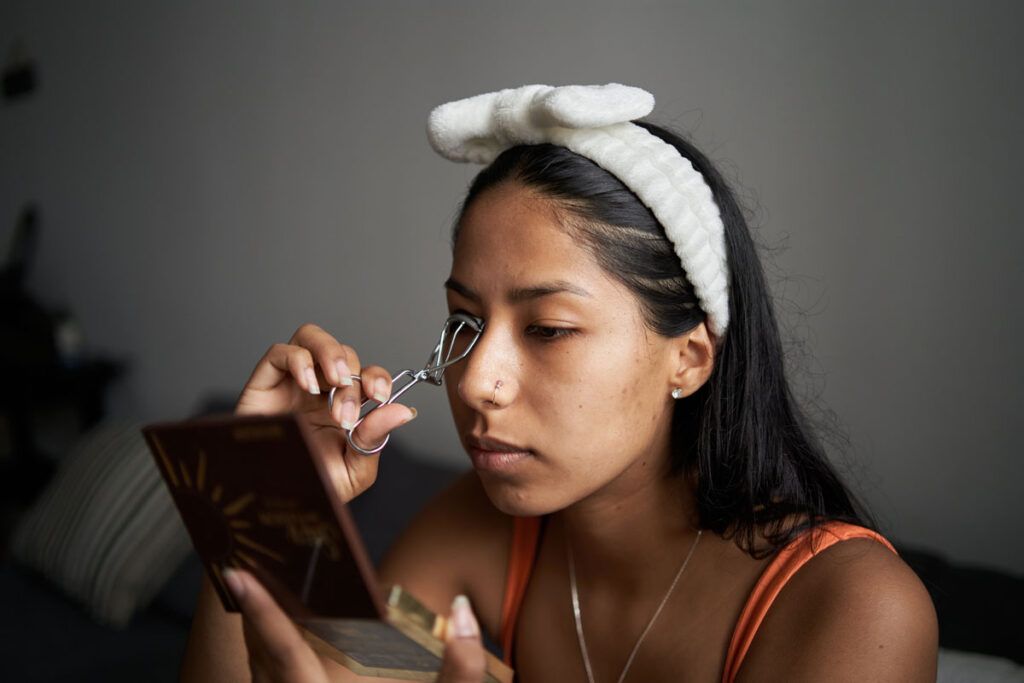Styes, also known as hordeolums, are very common, and you can typically take care of them at home.
A stye can develop under the eyelid or on the base of the eyelash, causing a painful red bump that is tender to touch. People often have a stye only on one eyelid, but you can get it on both eyes.
They may go away on their own, but you can take some steps to speed up your recovery.
What causes a stye?

The most common cause of a stye is bacterial infection. Styes occur when the glands in your eyelid that produce oil to lubricate the surface of the eye become infected.
This can cause swelling, pain, and the formation of a red bump inside or on the edge of your eyelid.
There are two different types of styes. When it occurs inside the eyelid, causing an infection of the oil-producing glands, doctors refer to it as an internal hordeolum.
If it happens on the edge of the eyelid, at the base of your eyelash, and affects the hair follicle, doctors call it an external hordeolum.
Styes aren’t too contagious, but sharing a towel or a pillow with someone who has this infection may cause the bacteria to spread.
You should also always wash your hands after touching the stye, as the bacteria may spread to your other unaffected eye.
Anyone can get a stye, but some factors can increase your risk of getting one, including:
- having another eye infection called blepharitis
- having already had a stye
- experiencing hormonal changes
- having dry skin or certain skin conditions, such as seborrheic dermatitis or rosacea
- high lipid levels in the blood
- having diabetes
Other risk factors that may trigger a stye include:
- inserting contact lenses without washing your hands first or without disinfecting the lenses appropriately
- using expired or old cosmetic products
- forgetting to remove eye makeup before going to bed
- touching your eyes without washing your hands first
Symptoms
A stye, in its beginning stages, may cause a scratchy, gritty sensation. This can feel like having a foreign body in your eye. It can cause irritation and discomfort that may induce tearing in your affected eye.
You may also notice the formation of a swollen bump or some redness on your eyelid at the base of your eyelashes, especially if you’re developing an external hordeolum.
A stye may also cause symptoms such as:
- swelling of the entire eyelid
- formation of a small central pus spot in the stye bump
- light sensitivity
- formation of crusts along the edge of your affected eyelid
Treatments
A stye usually goes away on its own without any specific treatment within a week.
Still, if you want to get rid of a stye overnight some at-home treatments may help speed up your recovery. You can use warm compresses at least four times a day for about 15 minutes at a time.
Some people also believe that the antioxidant and antibacterial properties of green tea may help speed up your recovery by killing the bacteria causing the infection.
Still, there’s no evidence that this is better than a warm water compress.
You should also regularly keep your eyelids clear from the discharge that may form due to the infection. You can do this by gently wiping away the discharge with a clean cloth and a mild soapy solution.
You can also use eyelid wipes, which are available in most drug stores.
You should never try to pop or squeeze a stye. It’s important to avoid wearing contact lenses or makeup until the infection has fully healed.
You should also try to avoid rubbing or touching the sty as this can cause irritation, slow the healing process, and increase the risk of spreading the bacteria.
If after 48 hours your discomfort and swelling aren’t improving or your symptoms are worsening, you should consider speaking with a doctor.
They can examine your eye and provide you with the appropriate medical treatment, including:
- antibiotic ointments or eye drops, such as erythromycin ointment (Ilotycin), to treat the bacterial infection
- steroid injections to reduce swelling
- performing a small incision under local anesthesia to drain the stye
If you need help covering the cost of medications, the free Optum Perks Discount Card could help you save up to 80% on prescription drugs. Follow the links on drug names for savings on that medication, or search for a specific drug here.
